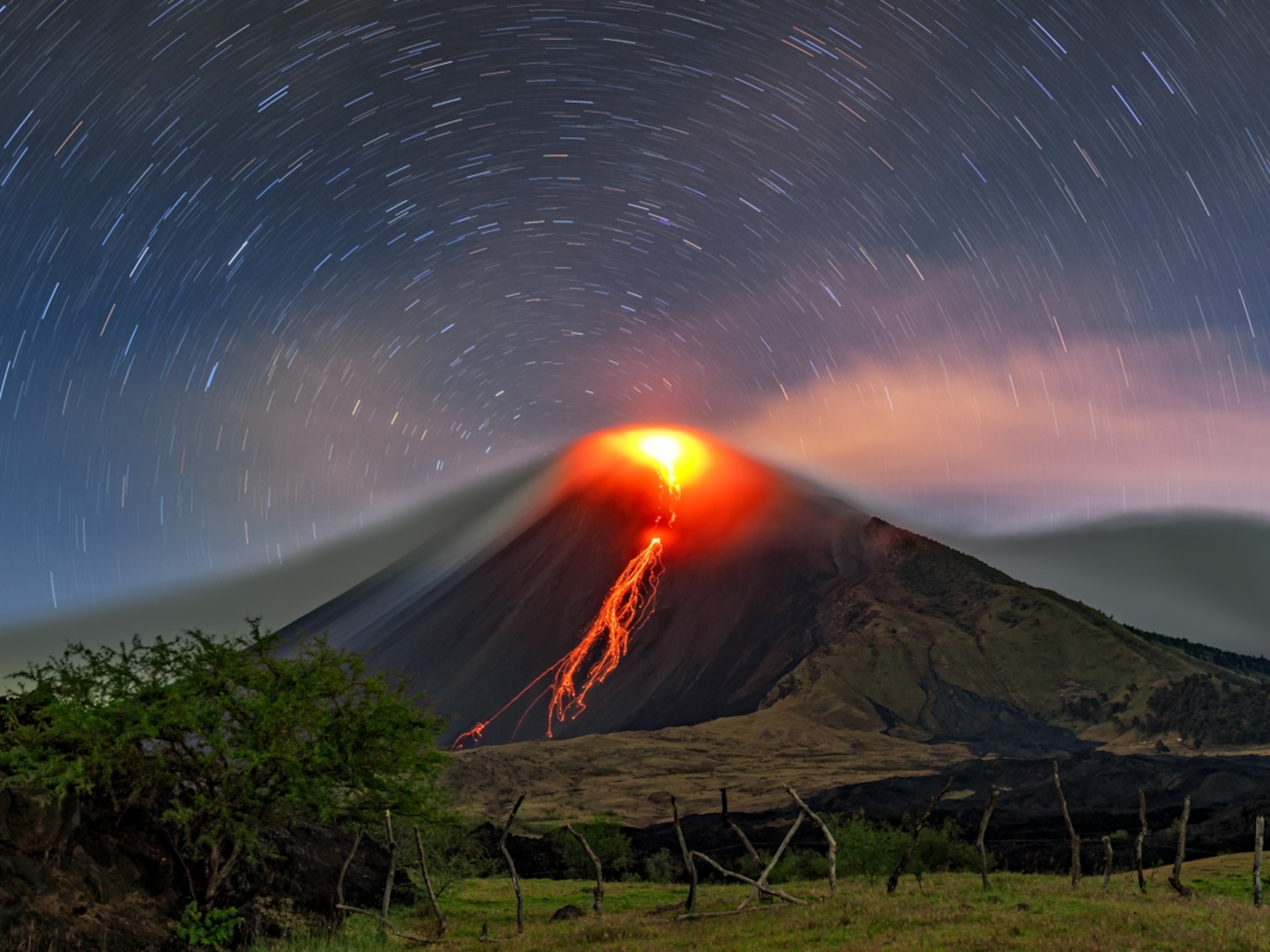Watch Video of First Volcanic Lightning Created in a Lab
Lightning in a bottle? Not quite. It’s volcanic lightning in a lab.
Scientists have created the first artificial volcano capable of simulating the lightning flashes seen in real-life eruptions.
Volcanic eruptions are amongst the most powerful geologic events known to humankind. They, and the trails of lava and ashes that follow, can destroy whole civilizations almost in an instant. (See also "Volcanoes; Earth's Fiery Power".)
However, little is known about a phenomenon that’s tightly linked to volcanic eruptions: electricity.
Electrical discharges often occur at the same time as explosive eruptions, especially in ash plumes—eruptions that eject only small particles, less than 2 millimeters in diameter. So far, our understanding of volcanic lightning has been severely limited by the challenge of studying an exploding volcano.
Now, researchers led by Corrado Cimarelli and Donald Dingwell, volcanologists from LMU University in Munich, Germany, have created the first ever lab-made volcano to study volcanic lightning.
Volcano-in-a-lab
The lab volcano combines a high-tech pressure cooker called a cylindrical autoclave with an ultra-hot oven. It’s designed to simulate the conditions that produce volcanic ash plumes.
Real volcanic ash is the final touch, triggering realistic bursts of smoke, grit—and electricity.
“To simulate the plume, we charged volcanic ash into a cylindrical autoclave made of steel and sealed at the top with a copper plate,” says Cimarelli. Researchers then injected gas into this system until it reached the target pressure that would break the copper plate.
“When the top plate is broken, the sample undergoes an instantaneous decompression that matches in value that experienced by volcanic particles during an explosive eruption,” Cimarelli says.
First, the sudden decompression causes the gas to escape and condense. Shortly after, small particles appear, and the first electrical discharges occur. “This is exactly what we see in the dynamic of cannon-like explosions at volcanoes like Sakurajima in Japan,” says Cimarelli.
Electrical Forecast
The experiment served to establish a direct correlation between the amount of ash ejected by an erupting volcano and the resulting amount of electrical activity.
“This means we might be able to quantify the content of fine ash in volcanic plumes by recording the volcanic lightning generated during explosive eruptions,” says Cimarelli. “We can also correlate this to the mass eruption rate of an eruption.”
These two parameters are currently very difficult to measure yet crucial to predicting volcanic consequences such as ash dispersal.
Using the lab volcano, researchers may now be able to decipher critical properties of volcanic ash plumes, such as the frequency of eruptions and the content of fine ash. That may lead to a better understanding of eruptions and to a better ability to respond to real-life volcanoes.
The scientists now plan move out of the lab and closer to danger.
“Observation of volcanic lightning at active volcanoes is clearly one of the next steps to take,” says Cimarelli. “We already took our cameras in the field and did some promising tests.”





